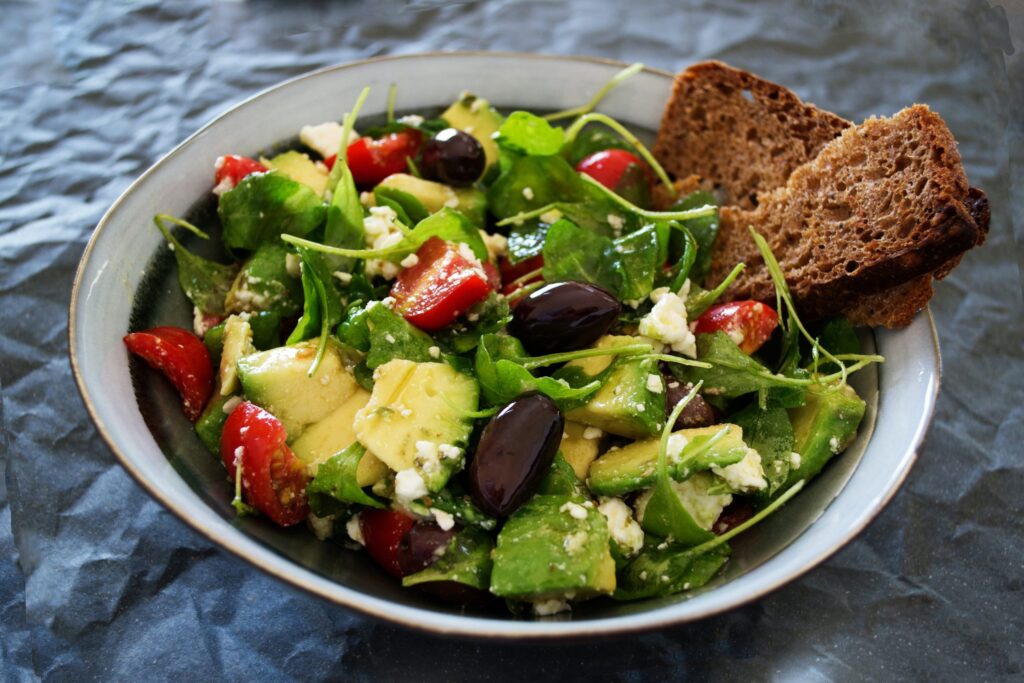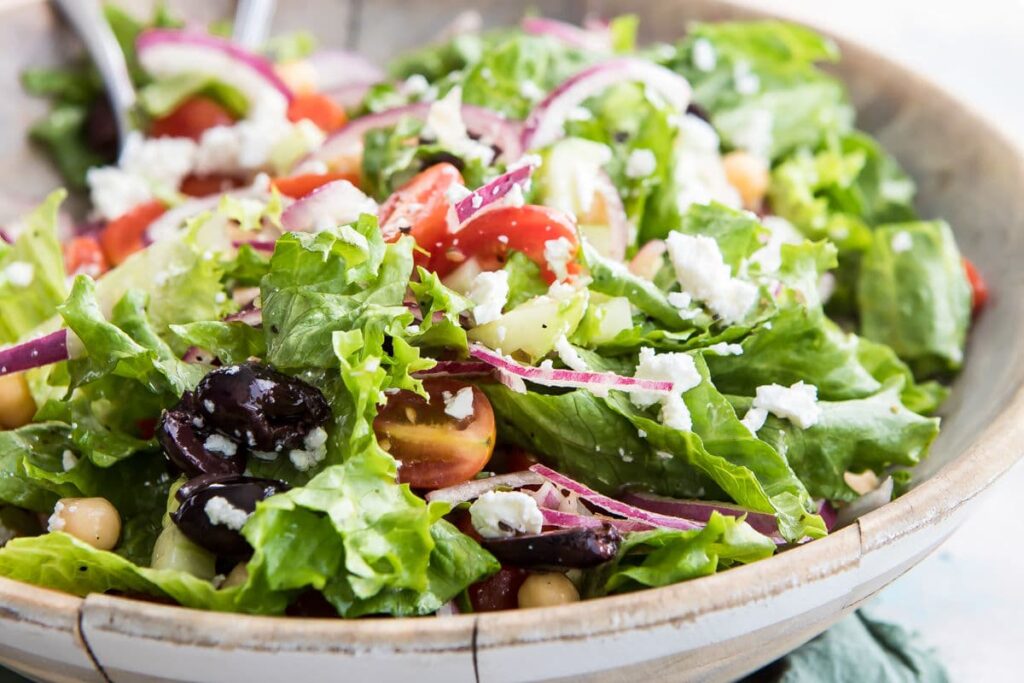Welcome to the vibrant realm of Mediterranean cuisine, where freshness meets flavor and simplicity intertwines with sophistication.
At the heart of this culinary journey lies the iconic Greek salad, a delightful medley of crisp vegetables, tangy cheese, briny olives, and fragrant herbs.
But within this classic dish lies a world of creative possibilities, with countless variations that tantalize the taste buds and celebrate the rich diversity of Mediterranean ingredients.
Join me as we embark on a culinary exploration of Mediterranean delight: Greek salad variations.

The Classic Greek Salad Reimagined
Step into the Mediterranean sunshine with the timeless allure of the classic Greek salad.
Crisp lettuce leaves, juicy tomatoes, crunchy cucumbers, piquant red onions, and creamy feta cheese dance together in perfect harmony, drizzled with extra virgin olive oil and kissed by the tang of lemon juice.
This quintessential dish captures the essence of Greek hospitality and is a feast for both the eyes and the palate.
Adding a Twist with Protein Power
Elevate your Greek salad experience by incorporating protein-packed additions that transform this dish into a satisfying meal.
Grilled chicken breast, succulent shrimp, or tender lamb gyro slices lend a hearty touch to the salad, providing a delectable contrast to the crispness of the vegetables and the creaminess of the cheese.
Whether served warm or chilled, these protein variations add a new dimension to the classic Greek salad.
Embracing Vegetarian and Vegan Options
For those who prefer a plant-based approach, Mediterranean cuisine offers an abundance of vegetarian and vegan Greek salad variations that burst with flavor and vitality.
Substitute traditional feta cheese with creamy avocado slices or marinated tofu cubes for a dairy-free delight.
Enhance the salad with nutrient-rich ingredients such as chickpeas, quinoa, or roasted vegetables to create a filling and nutritious meal that celebrates the bountiful produce of the Mediterranean region.
Exploring Regional Flavors and Ingredients
Venture beyond the shores of Greece and discover the diverse flavors and ingredients that characterize Mediterranean cuisine.
From the sun-drenched coasts of Italy to the spice-laden markets of Morocco, each region offers its own unique twist on the classic Greek salad.
Incorporate Italian-inspired ingredients like sun-dried tomatoes, balsamic vinegar, and fresh basil for a Mediterranean fusion masterpiece.
Or infuse Moroccan flair with preserved lemons, couscous, and harissa-spiced chickpeas, transporting your taste buds to exotic locales with every bite.

Crafting Creative Dressings and Marinades
Elevate your Greek salad game with homemade dressings and marinades that infuse every bite with zest and vibrancy.
Experiment with traditional Greek flavors such as tzatziki, made with yogurt, cucumber, garlic, and dill, or a zesty lemon-oregano vinaigrette that brightens the palate with its citrusy tang.
For a Mediterranean-inspired twist, try a roasted red pepper hummus dressing or a tangy feta and olive tapenade marinade that adds depth and complexity to your salad creation.
Incorporating Seasonal Produce and Herbs
Celebrate the changing seasons by incorporating fresh, seasonal produce and herbs into your Greek salad variations.
From juicy heirloom tomatoes and crisp Persian cucumbers in the summer to earthy roasted squash and tangy pomegranate seeds in the fall, let nature be your guide as you create colorful and flavorful salads that reflect the bounty of each season.
Enhance the freshness of your salads with fragrant herbs such as mint, parsley, and dill, whose aromatic notes elevate the flavors and transport you to sun-drenched Mediterranean gardens with every bite.
Serving Suggestions and Presentation Tips
Impress your guests with visually stunning presentations and creative serving suggestions that elevate the Greek salad from a simple side dish to the star of the show.
Arrange the ingredients artfully on a platter or in individual bowls, layering colors and textures to create a feast for the eyes as well as the palate.
Garnish with edible flowers, toasted nuts, or a drizzle of honey for a touch of elegance and sophistication that transforms your salad into a work of culinary art.
Conclusion:
In the world of Mediterranean cuisine, the possibilities are endless when it comes to Greek salad variations.
Whether you stick to the classic recipe or venture into uncharted culinary territory, one thing is certain: each bite is a celebration of the vibrant flavors and rich cultural heritage of the Mediterranean region.
So gather your ingredients, unleash your creativity, and embark on a culinary journey that will delight your senses and transport you to sun-kissed shores and azure seas.

FAQs:
1. Can I make Greek salad ahead of time?
Absolutely! Greek salad actually tastes better when the flavors have had time to meld together.
You can prepare it several hours in advance and store it in the refrigerator until you’re ready to serve.
2. Can I customize Greek salad to suit my dietary preferences?
Definitely! Greek salad is incredibly versatile and can be adapted to accommodate various dietary restrictions.
Simply omit or substitute ingredients to suit your taste and preferences.
3. Are there any traditional Greek salad variations I should try?
Yes! Apart from the classic Greek salad, you might want to explore regional variations like the Cretan dakos salad, which features barley rusks soaked in olive oil and topped with tomatoes, feta, and capers.
4. Can I make a large batch of Greek salad for a party?
Absolutely! Greek salad is perfect for gatherings and can easily be scaled up to feed a crowd.
Just adjust the quantities of ingredients accordingly and toss everything together in a large bowl before serving.
5. How long will Greek salad last in the refrigerator?
Greek salad will typically stay fresh for up to 2-3 days when stored in an airtight container in the refrigerator.
Just be sure to give it a good toss before serving to redistribute the dressing and flavors.
